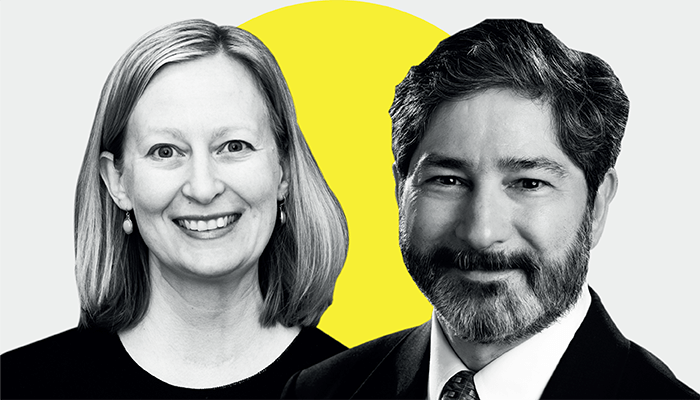
Could you give me a broad overview of some of the biggest developments in spectroscopy over the past decade?
Karen Esmonde-White: The application of some more sophisticated chemometric and machine-learning artificial-intelligence technologies are definitely up there. Even as somebody who doesn't use them, I can still see from a distance the impact they’re having by allowing people to get useful information out of spectra more easily. That’s really exciting to watch!
Rob Lascola: I agree. The integration of artificial intelligence and machine learning with spectroscopy is amazing. They’re enabling real-time analysis and intelligent mapping of observable areas, which promises to give significantly faster and more accurate analysis and results for some applications, such as cancer detection. And it can really help make point of care treatment and diagnostics more feasible. It’ll be fascinating to see how this progresses going forward.
Tell me about your current work and how it fits into the trends you’re seeing…
Lascola: Compared to graduate school, my work is much less technically complex; it's now a lot of absorbance spectroscopy, conventional linear Raman spectroscopy, and even some X-ray work. But what’s gotten more complicated is the application area. I’m studying nuclear materials, and doing measurements in our nuclear materials processing facilities. Essentially, I’ve now traded experimental setup complexity for being able to make measurements in highly radioactive or highly acidic or basic environments. It’s been challenging in a completely different way but also very rewarding because I get to see how my efforts affect the work of others.
Esmonde-White: It’s interesting that Rob notes how instrument complexity is decreasing but the application complexity is increasing, because that’s exactly what we’re seeing in Raman. Over the past 20 years, we’ve observed complex instruments that took a long time to master becoming increasingly accessible and easier to use. We see it with infrared, we see it with Raman, and certainly with near-infrared spectroscopy. Increased accessibility allows users to address more complicated applications – particularly in the biology space. Much of the progress has to do with the knowledge of the field, but also with emerging technologies.
What is the single-most exciting development happening in spectroscopy today?
Lascola: There are many choices, but I’m really impressed with spatially offset Raman spectroscopy. It’s exciting because we’re able to see light and make measurements in environments where you wouldn’t expect to. Normally, when you’re shining light on a sample, you have a very clear path for the light to get to it. But there are many situations where you don’t have a clear path; for example, if you have a sample inside a bottle or if you’re trying to measure tissues inside the body. Normally, the signal from the embedded sample is dominated by the surrounding material. But if you monitor the scattered light at a small offset from the position where the excitation light hits the material, the sample’s scattered light becomes more prominent. You have a lot more sensitivity to that embedded signal, ultimately giving you more power in your spectroscopic analysis.
Esmonde-White: I would agree with Rob on this. The realization that we can do Raman spectroscopy in turbid media and in layered samples and collect spectra from buried layers has been revolutionary for Raman spectroscopy. It’s especially important in the biomedical field where now you can get measurements through the skin to analyze subsurface bone or precancerous lesions, for example. It’s very exciting to see the potential of spatially offset Raman spectroscopy in this area. On a different note, it’s also starting to have an impact in art and conservation technologies; now, you don’t necessarily need to take a cross section of the sample to collect data from subsurface layers, which I think is really interesting!
And are there any major challenges?
Lascola: With recent advances allowing instrumentation to be simplified and brought into a production environment, it is becoming increasingly easy to get data. And though you can't expect every person who’s going to use these instruments to be a spectroscopic expert, there still has to be some degree of knowledge. And this is another area where the instrument design can start to incorporate real-time evaluation of the quality of data. Some handheld instruments do incorporate such elements, but I’d like to see more intelligent guidance for acquiring data – aiding the “casual user” or somebody whose expertise is in a different area. Helping users get the right data so they can make the right analyses and the right decisions is something that will really help spectroscopic technologies come into more widespread use.
Esmonde-White: Rob said that perfectly; I completely agree!
Karen Esmonde-White has been a Raman spectroscopist for 25 years, working in both research and industry settings. Her interest in spectroscopy was first piqued working at a laboratory at the University of Michigan before she went to grad school, where she coupled Raman microscopy with electrophoresis separations, and looked at different peptides. She is currently a Product Manager at the Endress+Hauser Group and is active in the Federation of Analytical Chemistry and Spectroscopy Societies (FACSS) for SciX conference planning.
Since earning his PhD from the University of Wisconsin-Madison, Rob Lascola has worked at Savannah River National Laboratory, where he is now a Senior Fellow Scientist exploring online analysis methods in nuclear materials processing facilities. He is the Program Chair for the 2022 SciX conference. The views expressed in the article do not necessarily represent the views of the U.S. Department of Energy of the U.S. Government.




